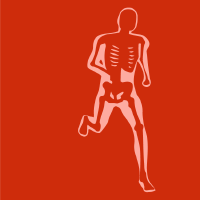Topic Editors


The Effect of Physical Activity on the Population's Health
Topic Information
Dear Colleagues,
Physical activity can improve overall health and prevent non-communicable diseases, such as cardiovascular disease, cancer, and diabetes. It also plays an important role in promoting healthy growth and development by helping to maintain a healthy weight, build strong bones and muscles, and improving cardiovascular health. Regular exercise can also improve cognitive function, thinking, learning, and judgment skills, as well as reduce the risk of chronic disease in later life. In addition, emerging evidence highlights the importance of reducing sedentary behavior and replacing it with more physical activity at all levels, including light-intensity physical activity. Despite this evidence, prevalence estimates are consistent in finding insufficient levels of physical activity globally and at all ages. This topic focuses on the association between physical activity and population health, investigating how changes in physical activity levels may affect the risk and burden of noncommunicable diseases, including among marginalized or vulnerable groups. We also seek studies that explore new approaches or innovative strategies to promote healthy lifestyles in children, adults, and vulnerable populations. The editors invite research submissions on the connections between physical activity, health, and well-being across different age groups and in various settings (e.g., community, home, workplace, and school). New research papers (observational studies and trials), reviews, systematic reviews and meta-analyses, case reports/series, brief reports, commentaries and conference papers are welcome to this Issue.
Dr. Stefania Paduano
Dr. Federica Valeriani
Topic Editors
Keywords
- physical activity
- sport
- sedentary behaviors
- health promotion
- physical education
- screen time
- obesity and overweight
- healthy lifestyle
- healthy growth
- health issues
Participating Journals
| Journal Name | Impact Factor | CiteScore | Launched Year | First Decision (median) | APC | |
|---|---|---|---|---|---|---|

Behavioral Sciences
|
2.5 | 2.6 | 2011 | 28.7 Days | CHF 2200 | Submit |

Children
|
2.0 | 2.7 | 2014 | 14 Days | CHF 2400 | Submit |

Healthcare
|
2.4 | 3.5 | 2013 | 20.3 Days | CHF 2700 | Submit |

International Journal of Environmental Research and Public Health
|
- | 7.3 | 2004 | 25.8 Days | CHF 2500 | Submit |

Journal of Functional Morphology and Kinesiology
|
2.6 | 4.2 | 2016 | 19.7 Days | CHF 1600 | Submit |

Obesities
|
- | - | 2021 | 14.3 Days | CHF 1000 | Submit |

MDPI Topics is cooperating with Preprints.org and has built a direct connection between MDPI journals and Preprints.org. Authors are encouraged to enjoy the benefits by posting a preprint at Preprints.org prior to publication:
- Immediately share your ideas ahead of publication and establish your research priority;
- Protect your idea from being stolen with this time-stamped preprint article;
- Enhance the exposure and impact of your research;
- Receive feedback from your peers in advance;
- Have it indexed in Web of Science (Preprint Citation Index), Google Scholar, Crossref, SHARE, PrePubMed, Scilit and Europe PMC.

